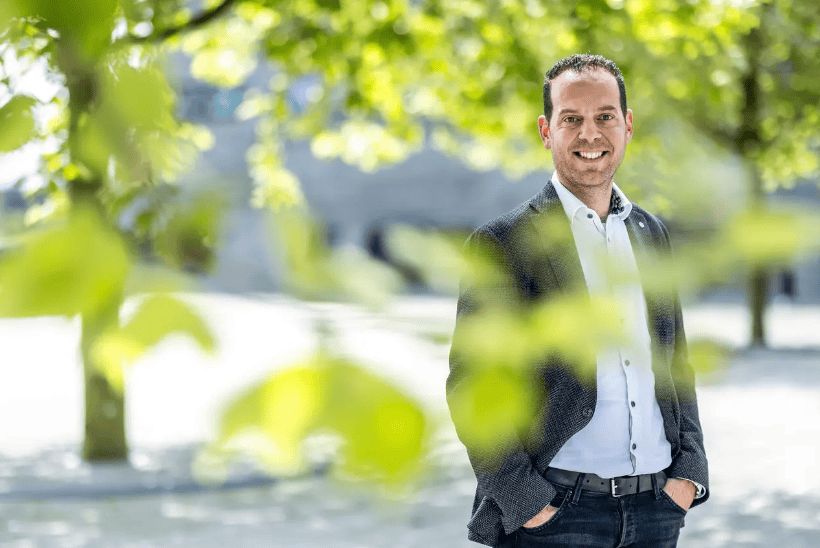
Last week I thought back a little wistfully on a few years ago. It must have been sometime around 2006. I had become the happy owner of two chickens (Fieke and Antoinette) and a rooster (Guus). In my city garden in Eindhoven. They lived in a beautiful wooden coop built by my father. With, of course, a chicken run for some good foraging. Every morning, I waited expectantly to see if any eggs had been laid. It took some time, but after a while Fieke and Antoinette produced a considerable output.
Guus the rooster also needed a little time to get going, but soon enough he, too, got into the groove. After a few weeks of silence, he started crowing cheerfully. I opened my bedroom window at night when I went to sleep so I could hear him in the morning. A natural alarm clock. I loved that sound. It felt like a kind of holiday in my own home.
National symbol
That is, until a neighbor from a little further down the road stood at my door. He was suffering from the cackling rooster in my backyard. I was reminded of that moment last week, because of the national issue currently being raised in France about Maurice the Rooster. Maurice, a proud rooster, was being sued by two city dwellers who had come to live next to him and his owner in the French countryside.
Now every resident of France has an opinion on this issue. The rooster is, after all, the national symbol of France and stands for pride and vigilance. Subsequently, Maurice the rooster appeals to the national identity.
The trial began last week amidst enormous interest from the French and international media. The new townie neighbors are demanding that Maurice sing a little lower, as they have “moved to the countryside for peace and quiet.” If they had wanted noise pollution, they would have stayed in the city, so say these ‘victims’. The owner of Maurice the rooster is an older and feisty lady. She believes that certain sounds are part of the countryside. So cock-a-doodle-do Maurice stays. Period.
Judge speaks
Maurice has now become the symbol of the French countryside that stands up for its rights with respect to the urban elite. How something minor can become very major. The judge will give a ruling at the beginning of September.
Incidentally, a judge in Switzerland has recently banned a rooster from crowing between 10 p.m. and 8 a.m. This rooster has to keep its beak closed until 9 a.m. every Sunday morning. This doesn’t bode well for Maurice the rooster. It is a matter of waiting for the absolving word from the French judges.
Coexisting
Like any other resident, I have an opinion about Maurice the rooster. You, too? As far as I’m concerned, Maurice the rooster can stay. After all, he was living there before the new neighbors. And a cackling rooster may be noisy, but it is part of country life.
Fortunately the matter concerning my own rooster, Guus, did not become a lawsuit back then. I returned Guus the rooster to his place of birth; a farm in Kempen. There he could happily keep on cackling.
Why did I bring him back? Because my neighbor told me that he was a bad sleeper, maybe? Because he’d tried everything and even sleeping with earbuds hadn’t helped? He thought it was strange too, because he also had come from the countryside and had grown up with natural sounds? Because he had been living there long before my rooster Guus? Because my rooster Guus began crowing earlier and earlier? Because 4:00 in the morning is actually really very early?
Thinking back, I suppose it was a combination of factors.
What the French Rooster issue especially reveals, is how difficult it is to find the right solution when people are living next to each other. Solutions that therefore may always vary depending on the situation. Sometimes the rooster goes back, other times the rooster stays and people put in earbuds. Or a conceivable creative interim variant.This calls for an open and sporting attitude on the part of all those involved and not just principled positions. That’s also why the famous French brand is Le Coq Sportif and not Le Coq En Principe!
About this column
In a weekly column, alternately written by Eveline van Zeeland, Jan Wouters, Katleen Gabriels, Maarten Steinbuch, Mary Fiers, Lucien Engelen, Peter de Kock, Tessie Hartjes and Auke Hoekstra, Innovation Origins tries to find out what the future will look like. These columnists, occasionally supplemented with guest bloggers, are all working in their own way on solutions for the problems of our time. So tomorrow will be good. Here are all the previous colomns.








